
Applied Biological Chemistry
Scope & Guideline
Unlocking the Secrets of Life at the Molecular Level.
Introduction
Aims and Scopes
- Biochemical Analysis and Characterization:
The journal emphasizes the biochemical characterization of natural compounds, including their extraction, purification, and biological activity assessment, often utilizing advanced analytical techniques. - Sustainable Agricultural Practices:
Research articles frequently explore sustainable practices in agriculture, including the use of biochar, crop residue management, and organic amendments to enhance soil fertility and crop yield. - Natural Product Research and Development:
A significant focus is on the investigation and development of bioactive compounds derived from plants and microorganisms, assessing their potential health benefits and applications in pharmaceuticals and nutraceuticals. - Biotechnology and Genetic Engineering:
The journal covers advances in biotechnology, including CRISPR technology, metabolic engineering, and the development of genetically modified organisms to improve crop traits and resistance. - Environmental Biochemistry:
Research includes studies on the bioremediation of contaminated environments, exploring the roles of microbes and plants in detoxifying pollutants and improving soil health.
Trending and Emerging
- Plant-based Bioactive Compounds:
There is an increasing trend in exploring plant-based bioactive compounds for their therapeutic potential, particularly in areas such as anti-inflammatory, antioxidant, and anticancer activities. - Microbial Biotechnology:
Research into microbial applications, including the use of probiotics and biocontrol agents, is gaining momentum, highlighting the role of microorganisms in health and environmental sustainability. - Nanotechnology in Medicine and Agriculture:
The integration of nanotechnology in the development of drug delivery systems, as well as in agricultural practices to enhance crop protection and nutrient delivery, is emerging as a significant research area. - Metabolomics and Systems Biology:
The application of metabolomics and systems biology approaches to understand complex biological processes and interactions is becoming increasingly prominent, aiding in the discovery of novel biomarkers and therapeutic targets. - Food Security and Nutritional Enhancement:
Research focusing on food security through biofortification and the enhancement of nutritional profiles of crops is rising, reflecting global concerns regarding food quality and health.
Declining or Waning
- Traditional Medicinal Plants:
Research on traditional medicinal plants has decreased, possibly due to a growing focus on more modern approaches in pharmacology and biochemistry. - Chemical Synthesis of Compounds:
There has been a noticeable decline in studies centered on purely chemical synthesis methods, with a shift towards naturally derived compounds and their applications. - In vitro Studies on Single Compounds:
The emphasis on isolated in vitro studies of single compounds appears to be waning, as more integrative and holistic approaches to studying complex interactions are favored.
Similar Journals

LIPIDS is a renowned peer-reviewed journal published by Wiley, dedicated to the field of lipid research, encompassing biochemistry, molecular biology, and organic chemistry. With its roots dating back to 1966 and a commitment to advancing knowledge until 2024, this journal serves as a vital platform for sharing significant findings in lipid biochemistry and its applications in health and disease. Although it currently does not offer Open Access options, it maintains a respectable standing with a Q3 ranking in Biochemistry and Organic Chemistry, and a Q4 ranking in Cell Biology based on the 2023 category quartiles. Additionally, its Scopus rankings reflect a solid position within the organic chemistry and biochemistry subfields. Published from Germany, LIPIDS caters to researchers, professionals, and students eager to explore the roles of lipids in biological processes and innovatory applications in various scientific disciplines.
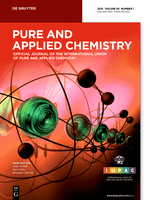
PURE AND APPLIED CHEMISTRY
Connecting Research to Real-World ApplicationsPURE AND APPLIED CHEMISTRY is a highly regarded journal in the fields of chemical engineering and general chemistry, published by Walter de Gruyter GmbH. Since its inception in 1960, this journal has continued to foster advancements in chemical research and facilitate the dissemination of new knowledge through its rigorous peer-reviewed articles. With an impressive impact factor that places it in Q2 quartile rankings for both Chemical Engineering and Chemistry as of 2023, it holds a significant position in the academic landscape, attracting authors and contributors from around the globe. The journal’s unique focus on the practical applications of chemical research makes it indispensable for researchers, professionals, and students aiming to bridge theoretical knowledge with real-world applications. Although it is not open access, its impact is enhanced by its continued relevance and contributions to the ever-evolving field of chemistry. Researchers and practitioners alike will find in PURE AND APPLIED CHEMISTRY a critical resource for staying updated on key developments and innovative practices in chemistry and chemical engineering.
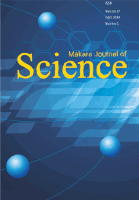
Makara Journal of Science
Connecting minds, cultivating innovation in science.Makara Journal of Science, published by UNIV INDONESIA, is an esteemed open-access journal that has been contributing to the field of scientific research since 2007. With an ISSN of 2339-1995 and E-ISSN of 2356-0851, this journal plays a crucial role in disseminating knowledge across various disciplines including Agricultural and Biological Sciences, Biochemistry, Genetics and Molecular Biology, Chemistry, Materials Science, and Physics and Astronomy. The journal operates out of Depok, Indonesia, and aims to foster international collaboration and bridge the gap between theory and practice through high-quality research publications. As of 2023, it holds a Q3 ranking in Agricultural and Biological Sciences and Q4 in several other categories, reflecting its steady growth and dedication to quality. Researchers, students, and professionals can access a wealth of pioneering studies that not only deepen understanding in their respective fields but also broaden interdisciplinary dialogue within the global scientific community. Join your peers and contribute to the ongoing discourse in this vital area of scientific exploration.

3 Biotech
Advancing the Frontiers of Biotechnology.3 Biotech is a prestigious interdisciplinary journal, published by SPRINGER HEIDELBERG, focusing on the evolving fields of biotechnology, agricultural and biological sciences, and environmental science. With an impressive impact factor and categorized in Q2 across multiple fields in the 2023 rankings, this journal stands out for its contribution to innovative research and its commitment to advancing scientific understanding. Featuring rigorous peer-reviewed articles, it serves as a vital resource for researchers, professionals, and students alike, further enhanced by its significant presence in Scopus rankings. This journal facilitates open discussions and collaborative efforts, aiming to bridge the gap between theoretical research and practical applications in biotechnology. As it continues to publish impactful studies from 2011 to 2024, 3 Biotech is dedicated to shaping the future of biosciences and fostering meaningful scientific advancements.
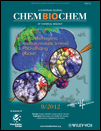
CHEMBIOCHEM
Advancing the frontiers of biochemical knowledge.CHEMBIOCHEM is a premier interdisciplinary journal published by WILEY-V C H VERLAG GMBH, dedicated to advancing knowledge in the fields of Biochemistry, Molecular Biology, Molecular Medicine, and Organic Chemistry. With an impactful presence since its inception in 2000 and a convergence through to 2024, the journal has established itself as a vital resource for researchers, professionals, and students alike, evidenced by its notable quartile rankings in 2023—Q2 in Biochemistry, Molecular Biology, and Molecular Medicine, and Q1 in Organic Chemistry. While it does not currently offer Open Access options, CHEMBIOCHEM remains a respected platform for disseminating high-quality research, reflected in its Scopus rankings, where it holds a credible position in various chemistry categories. By fostering innovative studies and discussions, CHEMBIOCHEM aims to contribute to the understanding and advancement of biochemical and molecular principles critical to contemporary science and healthcare.

ORGANIC SYNTHESES
Advancing the Frontiers of Organic ChemistryORGANIC SYNTHESES is a prestigious journal dedicated to the field of organic chemistry, published by ORGANIC SYNTHESES INC. Since its inception in 1946, the journal has served as a vital platform for researchers, educators, and practitioners in chemistry, showcasing significant findings and methodologies that advance the discipline. Although it currently does not offer open access, it is recognized for its rigorous peer-review process and its contribution to standardizing organic synthesis methods. With an ISSN of 0078-6209 and an E-ISSN of 2333-3553, the journal's impact reflects its quality, with a current Scopus ranking placing it in the fourth quartile in both Organic Chemistry and Physical and Theoretical Chemistry. This positioning underscores its critical role in fostering knowledge and innovation within these fields. Researchers and students alike will find ORGANIC SYNTHESES an essential resource for staying informed on contemporary practices and discoveries in organic synthesis.
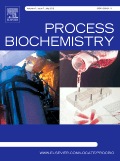
PROCESS BIOCHEMISTRY
Catalyzing progress in microbiology and biochemical research.PROCESS BIOCHEMISTRY is a premier journal published by Elsevier Science Ltd, dedicated to advancing the field of biochemistry, microbiology, and bioengineering. With an ISSN of 1359-5113 and an E-ISSN of 1873-3298, this renowned journal is recognized for its impactful contributions, as demonstrated by its Q2 ranking in Applied Microbiology and Biotechnology, Biochemistry, and Bioengineering categories as of 2023. Covering a wide array of topics since its inception in 1950, PROCESS BIOCHEMISTRY serves as a crucial platform for researchers and professionals to disseminate innovative findings and develop new insights in enzyme technology, metabolic pathways, and bioreactor design. Although the journal operates under a non-open access policy, it remains vital for those engaged in cutting-edge biochemical research and development. Located in the United Kingdom, it continues to facilitate scientific discourse and foster collaboration among industry experts and academic scholars worldwide.
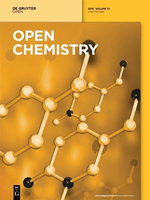
Open Chemistry
Unlocking Innovative Discoveries in ChemistryOpen Chemistry, published by DE GRUYTER POLAND SP Z O O, is a distinguished peer-reviewed journal that has been serving the global chemistry community since its inception. With an ISSN of 2391-5420 and an E-ISSN also of 2391-5420, this open-access journal has been accessible to researchers and practitioners alike since 2015, ensuring a wide dissemination of high-quality research findings. Located in Germany, specifically at BOGUMILA ZUGA 32A STR, 01-811 WARSAW, MAZOVIA, POLAND, Open Chemistry aims to publish innovative research across various chemical disciplines, with special attention to miscellaneous chemistry and materials chemistry. It is currently ranked in the Q3 category for both fields as of 2023, reflecting its solid standing within the academic community, with specific ranks of 187/408 in General Chemistry and 153/317 in Materials Chemistry, corresponding to respective percentiles of 54 and 51. Open Chemistry not only enhances the accessibility of cutting-edge research but also serves as a vital resource for students, professionals, and scholars seeking to advance their knowledge in the rapidly evolving landscape of chemical sciences.

Izvestiya Vuzov-Prikladnaya Khimiya i Biotekhnologiya
Catalyzing Collaboration in Scientific DiscoveryIzvestiya Vuzov-Prikladnaya Khimiya i Biotekhnologiya, published by Irkutsk National Research Technical University, is a prominent open-access journal dedicated to advancing the fields of applied chemistry and biotechnology. Since its inception in 2011, this journal has provided a platform for the dissemination of significant research findings, innovative techniques, and technological advancements that bridge the gap between theoretical frameworks and practical applications. The journal is indexed in various databases, ensuring that published works reach a global audience of researchers, professionals, and students eager to explore the latest developments in these critical disciplines. With its commitment to open-access publishing, Izvestiya Vuzov-Prikladnaya Khimiya i Biotekhnologiya plays a vital role in fostering collaboration and knowledge sharing within the scientific community, thus contributing to the advancement of both fields in a rapidly evolving technological landscape.

RUSSIAN JOURNAL OF BIOORGANIC CHEMISTRY
Advancing Knowledge in Bioorganic ChemistryRussian Journal of Bioorganic Chemistry (ISSN: 1068-1620, E-ISSN: 1608-330X), published by MAIK Nauka/Interperiodica/Springer, serves as a vital resource for researchers and professionals in the fields of bioorganic chemistry, biochemistry, and organic chemistry. With a focus on the integration of organic chemistry principles with biological processes, this journal aims to disseminate significant findings and advancements from both theoretical and practical perspectives. Although currently not open access, the journal retains a dedication to high-quality, peer-reviewed content, contributing to its reputation within the academic community. The 2023 Scopus rankings position it within the Q4 category for both biochemistry and organic chemistry, indicating its critical niche within these disciplines amid a competitive landscape. Since its inception in 1996, the journal has continued to evolve, providing enriching insights and fostering collaborations among scholars and practitioners alike, with publication converging up to the year 2024. By exploring complex biomolecular interactions and the synthesis of biologically relevant compounds, the Russian Journal of Bioorganic Chemistry remains a significant platform for advancing knowledge and innovation in the life sciences.